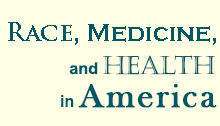Education
Higher Education Module
Race, Medicine, and Health in America
Class 3: The 1978 Love Canal Disaster
Introduction
Love Canal was the late 19th century dream community of William T. Love located on the eastern edge of Niagara Falls. However, the community that would sustain itself by hydro-electric power from Niagara Falls was hampered by construction delays and World War I, and was never fully realized. In 1947 the Hooker Chemical Company bought the land and dumped over 20,000 tons of toxic waste (including known carcinogens) in the ground. The Hooker Chemical Company began covering up the waste site in 1952 before selling the land to the city of Niagara Falls for $1 dollar. Over the next two decades suburban residents unknowingly settled on top of the percolating waste materials below ground until they began to observe toxic materials disinterring in yards and higher than normal incidences of certain cancers and other health problems. Partly in response to Love Canal’s national attention in 1978, President Jimmy Carter would pass the Comprehensive Environmental Response, Compensation and Liability Act (CERCLA), or Superfund legislation. Writings by Elizabeth Blum and Amy Hay both frame the Love Canal within evolving ideas of environmental citizenship and activism around toxic environments. Also, both contextualize the Love Canal through the lens of gender politics and activism.
Class Resources
Readings
Blum, Elizabeth. Love Canal Revisited: Race, Class, and Gender in Environmental Activism. Lawrence: University of Kansas Press, 2008, pp. 63-151.
Hay, Amy. “Recipe for Disaster: Motherhood and Citizenship at Love Canal.” Journal of Women’s History vol. 21, no. 1 (Spring 2009): pp. 111-134.
Additional online resources
National Library of Medicine. “TOXMAP: Environmental Health Maps.” Frequently Asked Questions. Available online at https://toxmap.nlm.nih.gov/toxmap/faq.html
Discussion Questions:
- What does the Love Canal disaster tell us about potential health problems of toxic materials within our environment?
- Have you been part of an environmental movement in your community? What were the issues at stake and how were they tied to questions of race, class, gender, and public health?
- Using the “TOXMAP” site, submit your current city, zip code, and state to see the number of times your residence comes up on the National Priorities List and Toxics Release Inventory.
- Are you surprised by your toxic environment? Why or why not? Drawing on the history of the Love Canal, in what ways can you become a more active environmental citizen?


